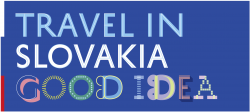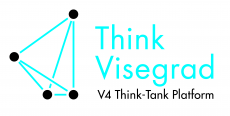This is the archival site of the former V4 portal. As of July 2024, it is no longer updated.
Visit visegrad.group for the current website.
Visit visegrad.group for the current website.

Thu 8 January 2026
Warszawa (PL)
4/2°C
| Tue | Wed | Thu | Fri | Sat |
|---|---|---|---|---|
| 1 | 3 | 5 | 6 | 8 |
Thu 8 January 2026
Praha (CZ)
6/2°C
| Tue | Wed | Thu | Fri | Sat |
|---|---|---|---|---|
| 6 | 5 | 8 | 8 | 9 |
Thu 8 January 2026
Bratislava (SK)
6/-1°C
| Tue | Wed | Thu | Fri | Sat |
|---|---|---|---|---|
| 8 | 6 | 7 | 8 | 8 |
Thu 8 January 2026
Budapest (HU)
5/-2°C
| Tue | Wed | Thu | Fri | Sat |
|---|---|---|---|---|
| 6 | 6 | 6 | 9 | 8 |
Demeš, Pavol: Visegrad Dreams
The Visegrad Four is today a tried and true foreign policy trademark that has the potential to last another 15 years. I am among those whose view of this Central European grouping was positive from the outset, but I admit to the feeling that from time to time our "quartet" could play better music.
From the era of the V3, when Visegrad consisted of Czechoslovakia, Hungary, and Poland, I have a vivid memory of the historic meeting in Brussels on 16 December, 1991, when as Slovak foreign minister I participated in the ceremonial signing of the Europe Agreements between Czechoslovakia, Hungary, and Poland and the European Community. The V3 Prime Ministers met in the conference rooms with their delegations and the representatives of the European Commission and the member states in a cheery mood, which was spoiled by a Spanish diplomat who brought forth some unexpected objections shortly before the signing ceremony. I believe they concerned the manufacture and export of steel. We were all speechless at this euro-manoeuvre. We had to find a suitable compromise formula quickly, and all three delegations as well as the Commissioner for Enlargement struggled greatly with it. Czechoslovak Prime Minister Marián Čalfa used some colourful language. It was the Polish Foreign Minister Krzysztof Skubiszewski, a calm man with wide experience of nternational law, who finally pulled the thorn from the Visegrad paw. Finally, under the lights and cameras, the V3 in front of Prime Ministers signed the historic documents that opened our path to the family of European democracies. (Slovakia and the Czech Republic, following the dissolution of their federation, later had to renegotiate these agreements and sign them again.)
During the reign in Slovakia of Vladimír Mečiar and the temporary expulsion of Slovakia from European and trans-Atlantic integration processes, I closely followed the efforts of the representatives of the Czech Republic, Hungary, and Poland on the international scene. These were times when our country was doubted on all sides. I worked at the side of President Michal Kováč, and I remember how Presidents Václav Havel, Arpád Göncz, and Lech Walesa (and later President Aleksander Kwaśniewski) fought for Slovakia and encouraged us in our internal battle for democracy, which we eventually won. Thanks also to Visegrad togetherness the foursome gained membership the European Union, and despite occasional speculation, did not quit their cooperation within the EU. It is gratifying that the representatives of the four countries continue to meet regularly, and that a proper financial mechanism was found for the International Visegrad Fund, which has already supported hundreds of excellent projects.
I occasionally notice with the V4 that there is little activity on common stances towards difficult problems and nearby crises. The most glaring example of this was during the Orange Revolution in Ukraine, with whom three Visegrad states share a border. In the most critical moments, however, the Visegrad states did not make any common statement. A new test as well as a chance for the V4 will be their contribution to the solution of the complicated situations in Belarus, Ukraine and the West Balkans, above all in Serbia and Montenegro and Kosovo. Looking to the future, I see the significance of the V4 lying in deepening the many-layered relations between Visegrad countries, and in coordinating their approaches and stances in an ever more complicated European Union. The cooperation and experiences of the countries of the V4 could also be a significant inspiration for other countries - what about trying to replicate the International Visegrad Fund model in the Balkans? What if a southern Visegrad Fund were founded and managed by the countries of the former Yugoslavia? The Hungarian town of Visegrad, where 15 years ago a small Central European family was started, has a sibling town in the north of Bosnia. In this southern Visegrad lies perhaps the most famous bridge in the Balkans over the Drina River, a bridge described in the world-famous book by Nobel Prize winner Ivo Andriç. Do these facts not offer us parallels to our own Visegrad dream?
Pavol Demeš
Politician, bio-medical researcher, photographer. Director for Central and Eastern Europe of the German Marshall Fund of the United States (GMF) in Bratislava. Previous Executive Director of the Slovak Academic Information Agency - Service Center. Served as Foreign Policy Advisor of the President of the Slovak Republic (1993-1997) and as Minister of Foreign Affairs (1991-1992).







